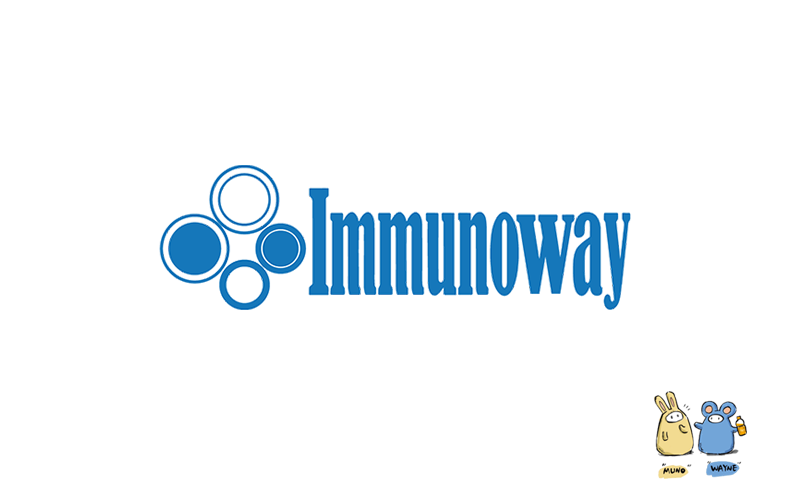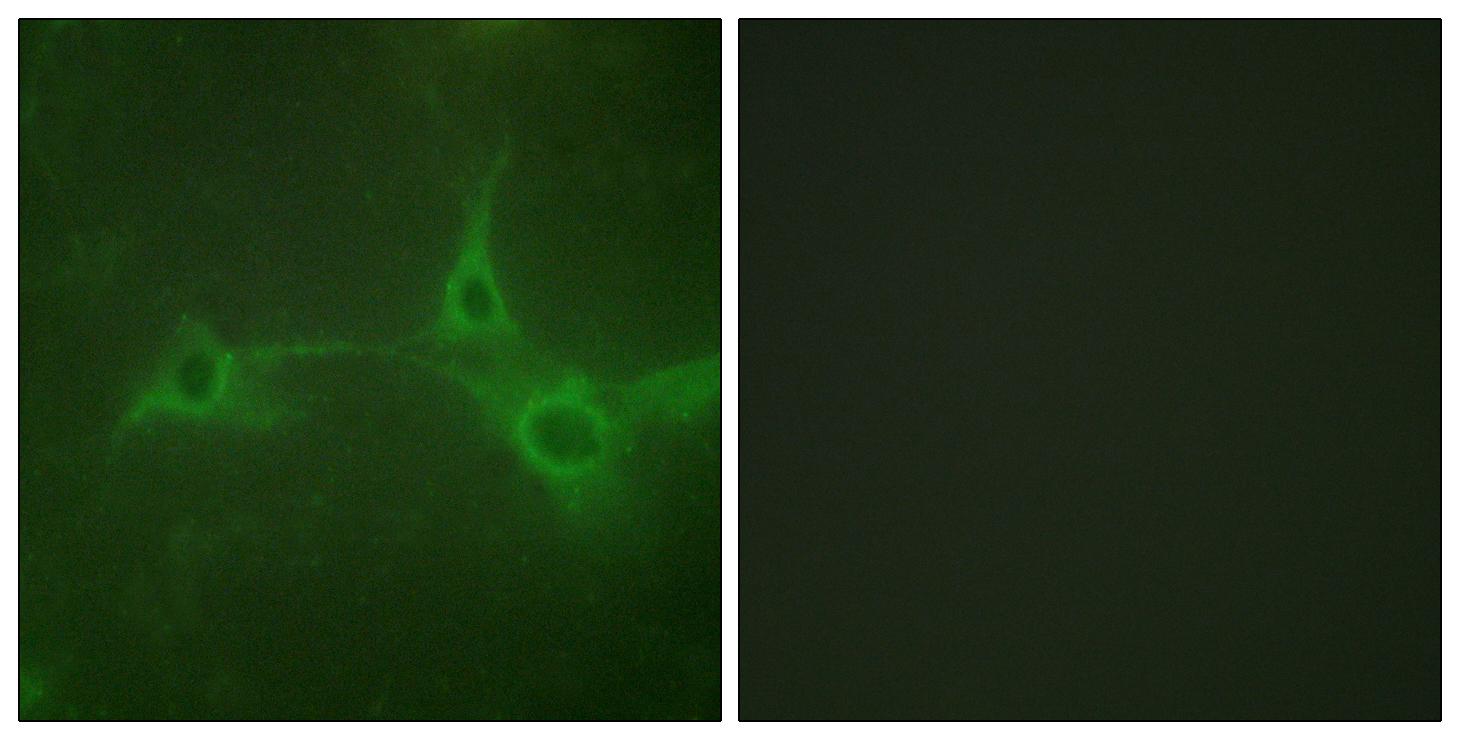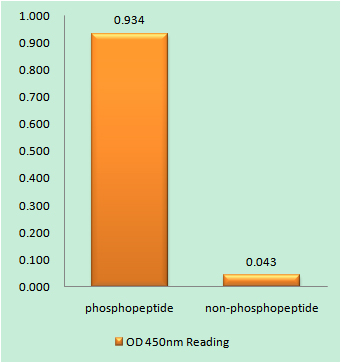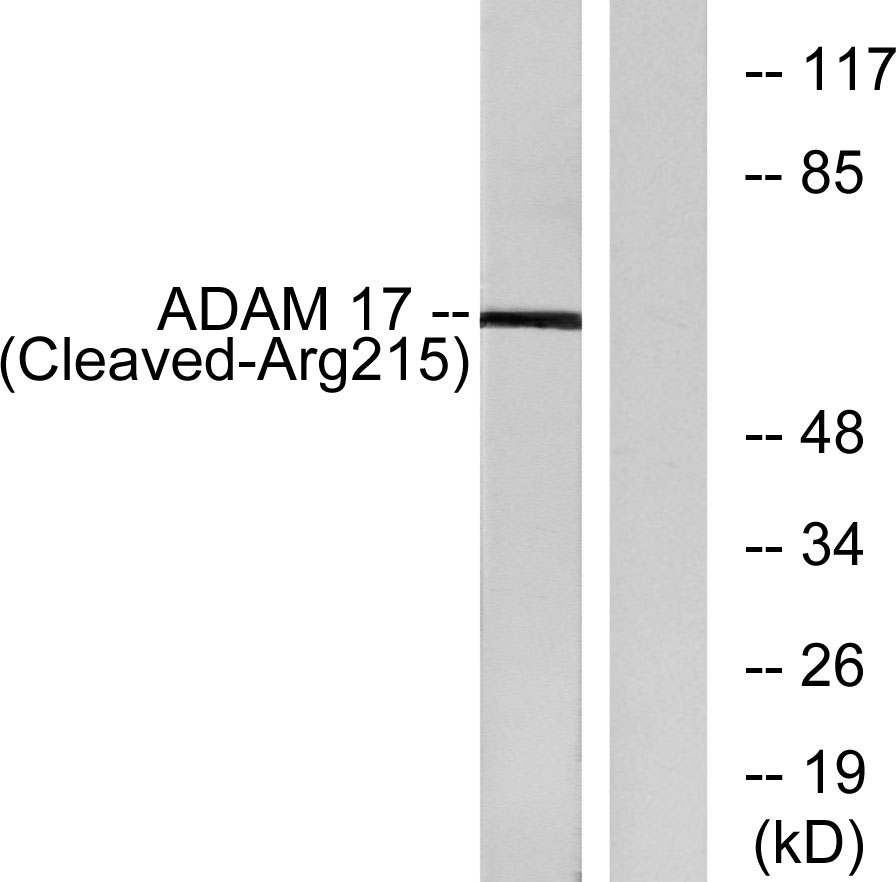
Catalog: KA3931C
Size
Price
Status
Qty.
96well
$330.00
In stock
0
Add to cart


Collected


Collect
Main Information
Reactivity
Human
Applications
ELISA
Conjugate/Modification
Unmodified
Detailed Information
Storage
2-8°C/6 months
Modification
Unmodified
Detection Method
Colorimetric
Related Products
Antigen&Target Information
Gene Name:
ADAM17
show all
Other Name:
Disintegrin and metalloproteinase domain-containing protein 17 ;
ADAM 17 ;
Snake venom-like protease ;
TNF-alpha convertase ;
TNF-alpha-converting enzyme ;
CD antigen CD156b ;
ADAM 17 ;
Snake venom-like protease ;
TNF-alpha convertase ;
TNF-alpha-converting enzyme ;
CD antigen CD156b ;
show all
Background:
catalytic activity:Narrow endopeptidase specificity. Cleaves Pro-Leu-Ala-Gln-Ala-|-Val-Arg-Ser-Ser-Ser in the membrane-bound, 26-kDa form of tumor necrosis factor alpha (TNF-alpha). Similarly cleaves other membrane-anchored, cell-surface proteins to 'shed' the extracellular domains.,cofactor:Binds 1 zinc ion per subunit.,domain:Must be membrane anchored to cleave the different substrates. The cytoplasmic domain is not required for the this activity. Only the catalytic domain is essential to shed TNF and p75 TNFR.,domain:The conserved cysteine present in the cysteine-switch motif binds the catalytic zinc ion, thus inhibiting the enzyme. The dissociation of the cysteine from the zinc ion upon the activation-peptide release activates the enzyme.,function:Cleaves the membrane-bound precursor of TNF-alpha to its mature soluble form. Responsible for the proteolytic release of several other cell-surface proteins, including p75 TNF-receptor, interleukin 1 receptor type II, p55 TNF-receptor, transforming growth factor-alpha, L-selectin, growth hormone receptor, MUC1 and the amyloid precursor protein. Also involved in the activation of Notch pathway.,induction:In arthritis-affected cartilage.,online information:Tumor necrosis factor alpha-converting enzyme entry,PTM:Phosphorylated. Stimulation by growth factor or phorbol 12-myristate 13-acetate induces phosphorylation of Ser-819 but decreases phosphorylation of Ser-791.,PTM:The precursor is cleaved by a furin endopeptidase.,similarity:Contains 1 disintegrin domain.,similarity:Contains 1 peptidase M12B domain.,subunit:Interacts with MAD2L1 and MUC1.,tissue specificity:Ubiquitously expressed. Expressed at highest levels in adult heart, placenta, skeletal muscle, pancreas, spleen, thymus, prostate, testes, ovary and small intestine, and in fetal brain, lung, liver and kidney.,
show all
Function:
regulation of cyclin-dependent protein kinase activity, G1/S transition of mitotic cell cycle, mitotic cell cycle, regulation of cell growth, response to hypoxia, cell activation, regulation of cytokine production, negative regulation of cytokine production, positive regulation of cytokine production, regulation of protein amino acid phosphorylation, positive regulation of protein amino acid phosphorylation, response to molecule of bacterial origin, adaptive immune response,immune effector process, leukocyte mediated immunity, myeloid leukocyte mediated immunity, neutrophil mediated immunity, adaptive immune response based on somatic recombination of immune receptors built from immunoglobulin superfamily domains, germinal center formation, immune system development, leukocyte differentiation, positive regulation of immune system process, regulation of leukocyte migration, positive regulation of leukocyte migration,regulation of leukocyte chemotaxis, positive regulation of leukocyte chemotaxis, proteolysis, membrane protein ectodomain proteolysis, anti-apoptosis, cell motion, immune response, cell cycle, cell adhesion, cell surface receptor linked signal transduction, enzyme linked receptor protein signaling pathway, transmembrane receptor protein tyrosine kinase signaling pathway, epidermal growth factor receptor signaling pathway, regulation of epidermal growth factor receptor activity, Notch signaling pathway, positive regulation of cell proliferation, regulation of cell size,macromolecule catabolic process, response to wounding, response to bacterium, response to endogenous stimulus,positive regulation of signal transduction, response to organic substance, regulation of receptor activity, positive regulation of phosphorus metabolic process, positive regulation of macromolecule metabolic process, positive regulation of cell communication, regulation of T cell chemotaxis, positive regulation of T cell chemotaxis, regulation of cell death, cell migration, regulation of transforming growth factor beta receptor signaling pathway, regulation of phosphate metabolic process, cell cycle process, cell cycle phase, biological adhesion, hemopoiesis, lymphocyte differentiation, protein catabolic process, B cell differentiation, T cell differentiation, positive regulation of cell growth,regulation of cell migration, positive regulation of cell migration, positive regulation of transforming growth factor beta receptor signaling pathway, membrane protein intracellular domain proteolysis, regulation of protein modification process, positive regulation of protein modification process, regulation of cyclin-dependent protein kinase activity during G1/S, positive regulation of cyclin-dependent protein kinase activity during G1/S, regulation of response to external stimulus, positive regulation of response to external stimulus, regulation of cellular protein metabolic process,positive regulation of cellular protein metabolic process, response to lipopolysaccharide, regulation of cellular component size, regulation of chemokine production, regulation of interleukin-8 production, negative regulation of interleukin-8 production, positive regulation of chemokine production, regulation of homeostatic process, regulation of mast cell apoptosis, regulation of myeloid cell apoptosis, T cell differentiation in the thymus, membrane protein proteolysis, cell adhesion mediated by integrin, positive regulation of kinase activity, wound healing, spreading of epidermal cells, regulation of growth, regulation of locomotion, positive regulation of locomotion, regulation of epidermal growth factor receptor signaling pathway, wound healing, T cell activation, B cell activation, regulation of cell proliferation, regulation of phosphorylation, positive regulation of phosphorylation, response to drug, regulation of apoptosis, negative regulation of apoptosis, regulation of programmed cell death, negative regulation of programmed cell death, positive regulation of catalytic activity, regulation of kinase activity, positive regulation of molecular function, cellular protein catabolic process, cellular macromolecule catabolic process, leukocyte activation, positive regulation of cyclin-dependent protein kinase activity, positive regulation of epidermal growth factor receptor activity,positive regulation of epidermal growth factor receptor signaling pathway, positive regulation of cell cycle, positive regulation of cell size, regulation of protein kinase activity, positive regulation of protein kinase activity, positive regulation of growth, positive regulation of phosphate metabolic process, lymphocyte activation, positive regulation of behavior, hemopoietic or lymphoid organ development, spleen development, positive regulation of response to stimulus, cell motility, regulation of behavior, regulation of chemotaxis, positive regulation of chemotaxis, PMA-inducible membrane protein ectodomain proteolysis, regulation of phosphorus metabolic process, positive regulation of multicellular organismal process, negative regulation of multicellular organismal process, positive regulation of protein metabolic process, regulation of cell motion, positive regulation of cell motion, interphase, interphase of mitotic cell cycle, regulation of transferase activity, positive regulation of transferase activity, proteolysis involved in cellular protein catabolic process, localization of cell, regulation of cell cycle, response to lipoprotein stimulus, response to high density lipoprotein stimulus, negative regulation of cell death, response to oxygen levels,
show all
Cellular Localization:
Membrane; Single-pass type I membrane protein.
show all
Tissue Expression:
Ubiquitously expressed. Expressed at highest levels in adult heart, placenta, skeletal muscle, pancreas, spleen, thymus, prostate, testes, ovary and small intestine, and in fetal brain, lung, liver and kidney. Expressed in natural killer cells (at protein level) (PubMed:24337742).
show all
Signaling Pathway
Reference Citation({{totalcount}})
Catalog: KA3931C
Size
Price
Status
Qty.
96well
$330.00
In stock
0
Add to cart


Collected


Collect
Recently Viewed Products
Clear allPRODUCTS
CUSTOMIZED
ABOUT US
Toggle night Mode
{{pinfoXq.title || ''}}
Catalog: {{pinfoXq.catalog || ''}}
Filter:
All
{{item.name}}
{{pinfo.title}}
-{{pinfo.catalog}}
Main Information
Target
{{pinfo.target}}
Reactivity
{{pinfo.react}}
Applications
{{pinfo.applicat}}
Conjugate/Modification
{{pinfo.coupling}}/{{pinfo.modific}}
MW (kDa)
{{pinfo.mwcalc}}
Host Species
{{pinfo.hostspec}}
Isotype
{{pinfo.isotype}}
Product {{index}}/{{pcount}}
Prev
Next
{{pvTitle}}
Scroll wheel zooms the picture
{{pvDescr}}



















